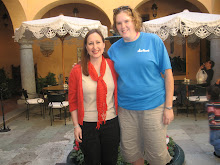early missionaries to China faced a formidable obstacle. they had to learn the Chinese writing system. as Westerners, accustomed to writing with European alphabets of approximately 26 letters, they gasped! Chinese writing, they found, used a system based on 214 symbols called "radicals."
they gasped again when they learned that these 214 radicals-enigmatic enough in themselves-combine to form between 30,000 to 50,000 ideographs.
it was enough to make even the most patient saint gripe! why on earth would the sovereign God permits any people to develop a writing system so "radical"? didn't it matter to God that Chinese writing placed an almost impassable barrier in the way of communicating the gospel to one-quarter of mankind?
one day, however, one of the missionaries stopped complaining. he was studying a particular Chinese ideograph, the one which means "righteous." he noticed that it contained an upper and lower part. the upper part was simply the Chinese symbol for a lamb. Directly under the lamb was a second symbol, the first person pronoun I. Suddenly her discerned an amazingly well-coded message hidden within the ideograph: i under the lam am righteous!
it was nothing less than the heart of the gospel he had crossed the ocean to preach! Chinese were startled when he called their attention to the hidden message. they had never noticed it, but once he pointed it out, they saw it clearly. when he asked, "which Lamb must we be 'under' to be righteous?" they had no answer. with consummate delight he told them of "the Lamb that was slain from the creation of the world" (Rev 13:8), the same "Lamb of God who takes away the sin of the world" (John 1:29).
he shared his discovery with fellow missionaries and soon they in turn began uncovering still other spiritual messages encoded within the 4,000 year old ideographs! Chinese language study suddenly became the most exciting adventure they had ever experienced!
another example: the Chinese symbol for a boat embodies a vessel with eight people inside it. eight people? Noah's ark bore exactly eight people to safety.
the radical meaning "man" is a figure shaped like an upside down y. the ideograph meaning tree is a cross with the symbol for man superimposed upon it! and the symbol for come calls for two other smaller symbols for man to stand on either side of the tree with the greater man superimposed upon it. some students of Chinese writing claim that the two smaller human figures collectively mean mankind. if so, the ideograph meaning come seems to carry a code that says: "mankind come to the man on the tree."
for careful study of several other spiritually pregnant Chinese ideographs, i refer readers to C.H. Kang and E. R. Nelson's recent book on the subject, listed in our bibliography. not all researches agree on the exact interpretation of each and every symbol. nevertheless, Chinese people themselves (and many Japanese, for Japan uses virtually the same writing system) have been intrigued by interpretations which missionaries have suggested to them. even when theories are non-conclusive, the mere discussion of them may be sufficient to communicate spiritual truth to unbelievers.
i have found in my research that many Chinese and Japaneses pastors themselves consider the use of these various symbols a valid entree to the minds of their own people.
One missionary, returned from China, told of a Chinese solder who approached him, bristling with hostility. the missionary sketched some of the aforementioned symbols on a pad and pointed out their "hidden" meanings. the soldier's eyes opened wide. "I was told," he exclaimed, "that Christianity was a foreign devil's religion! now you show me that the wiring system of my own country preaches it!"
the book mentioned earlier about the ideographs by Kang and Nelso is called "the discovery of Genesis"

No comments:
Post a Comment